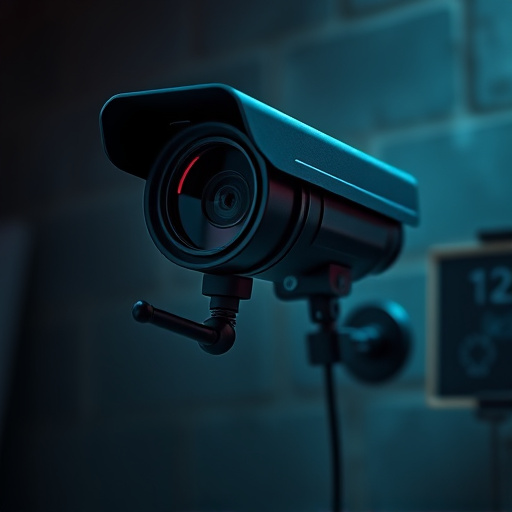Discreet audio surveillance tools, like hidden sound recorders integrated into everyday items (pens, clothing accessories), offer high-quality video and audio capture for home security, corporate investigations, law enforcement, and academic research. However, their use raises legal and ethical concerns, especially regarding privacy rights and consent. Advanced detection methods, such as thermal imaging and detector dogs, are employed to identify these devices, while robust security measures, including motion sensors and encrypted communication, can deter their installation.
Hidden sound recorders, a blend of advanced technology with spy cameras and microphones, offer unseen capabilities. This stealthy equipment captures audio covertly, raising both practical applications and ethical concerns. From surveillance to personal safety, these devices find diverse uses. However, their proliferation necessitates understanding legal boundaries and privacy implications. This article explores the technology behind hidden sound recorders, their applications, the legal landscape surrounding them, and methods for detection and prevention.
Understanding Hidden Sound Recorders: Unveiling the Technology
Hidden sound recorders, often disguised as everyday objects like pens, keys, or even clothing accessories, are advanced devices that allow for discreet audio surveillance. These innovative gadgets combine the functionality of a spy camera and microphone to capture sounds without raising suspicion. The technology behind them is remarkable; they can record high-quality audio over extended periods, making them valuable tools for various purposes, from home security to professional investigations.
These recorders typically use compact and durable designs to ensure they remain hidden. They often feature non-intrusive power sources, such as rechargeable batteries, and can be remotely activated or triggered, ensuring users capture the exact moments they intend to record. With advancements in miniaturization, these devices offer a blend of convenience and secrecy, making them sought after by individuals seeking to document evidence or maintain personal safety in secretive environments.
Spy Cameras and Microphones: A Powerful Combination
Spy cameras and microphones have become a powerful combination in the world of hidden sound recording, offering unprecedented levels of surveillance and intelligence gathering. These advanced devices are designed to operate discreetly, making them ideal for various applications that require unnoticeable monitoring. The spy camera, often built into everyday objects like pens, watches, or even light bulbs, captures high-quality video footage without drawing attention. Meanwhile, the microphone, when integrated with these cameras, ensures every crucial sound is recorded, providing a comprehensive audio-visual experience.
The synergy between spy cameras and microphones enhances security, making it easier to detect and prevent potential threats. In corporate settings, they can be used for internal audits and employee monitoring, ensuring no sensitive information leaks out. Law enforcement agencies benefit from this technology in covert operations, allowing them to gather evidence without compromising their presence. Moreover, homeowners can protect themselves from intruders or burglars by setting up hidden cameras and microphones around their properties, providing peace of mind.
Applications: Where are They Used?
Hidden sound recorders, often integrated with spy cameras and microphones, find applications across various domains due to their discreet and versatile nature. From home security enthusiasts seeking to monitor activities in their properties to professionals in fields like journalism, law enforcement, and academia, these devices offer a covert way to capture audio without raising suspicion.
In the corporate world, they are utilized for quality control and training purposes, ensuring employees adhere to safety protocols or company policies. Legal professionals might employ them during interviews or meetings for evidence gathering, though such uses come with legal considerations regarding consent. Additionally, they are valuable tools for investigators aiming to collect intelligence or conduct undercover operations, making them a significant part of modern surveillance technology.
Legal Considerations and Ethical Implications
The use of hidden sound recorders, often integrated into devices like spy cameras with microphones, raises a series of legal considerations and ethical dilemmas. In many jurisdictions, covert recording of conversations or private activities is illegal without explicit consent from all parties involved, except in specific circumstances such as law enforcement actions with proper authorization. Violating this privacy right can lead to severe legal repercussions, including charges for eavesdropping or invasion of privacy.
Ethically, the deployment of these devices poses questions about trust, transparency, and individual autonomy. Recording conversations or activities without someone’s knowledge can erode trust in personal interactions and relationships. It also raises concerns about the potential misuse of recorded information, as these devices could enable the capture and dissemination of sensitive data for malicious purposes. Balancing security and privacy becomes a delicate act when considering the use of hidden sound recorders, requiring careful consideration and adherence to both legal boundaries and ethical standards.
Detecting and Preventing Hidden Sound Devices
Detecting hidden sound recorders, often disguised as everyday items like smoke detectors or wall art, requires a keen eye and advanced technology. One effective method is to use thermal imaging cameras, which can reveal unusual heat signatures indicative of electronic devices. Additionally, hand-held detector dogs trained to sniff out specific chemicals associated with spy cameras and microphones can be employed for thorough inspections.
Preventing the installation of hidden sound devices involves a combination of security measures. Regularly updating home or office security systems, installing motion sensors, and using encryption for sensitive conversations are effective deterrents. Furthermore, being vigilant and aware of any unusual items or behaviors, and promptly reporting them to relevant authorities, can significantly reduce the risk of falling victim to surveillance intrusions.
